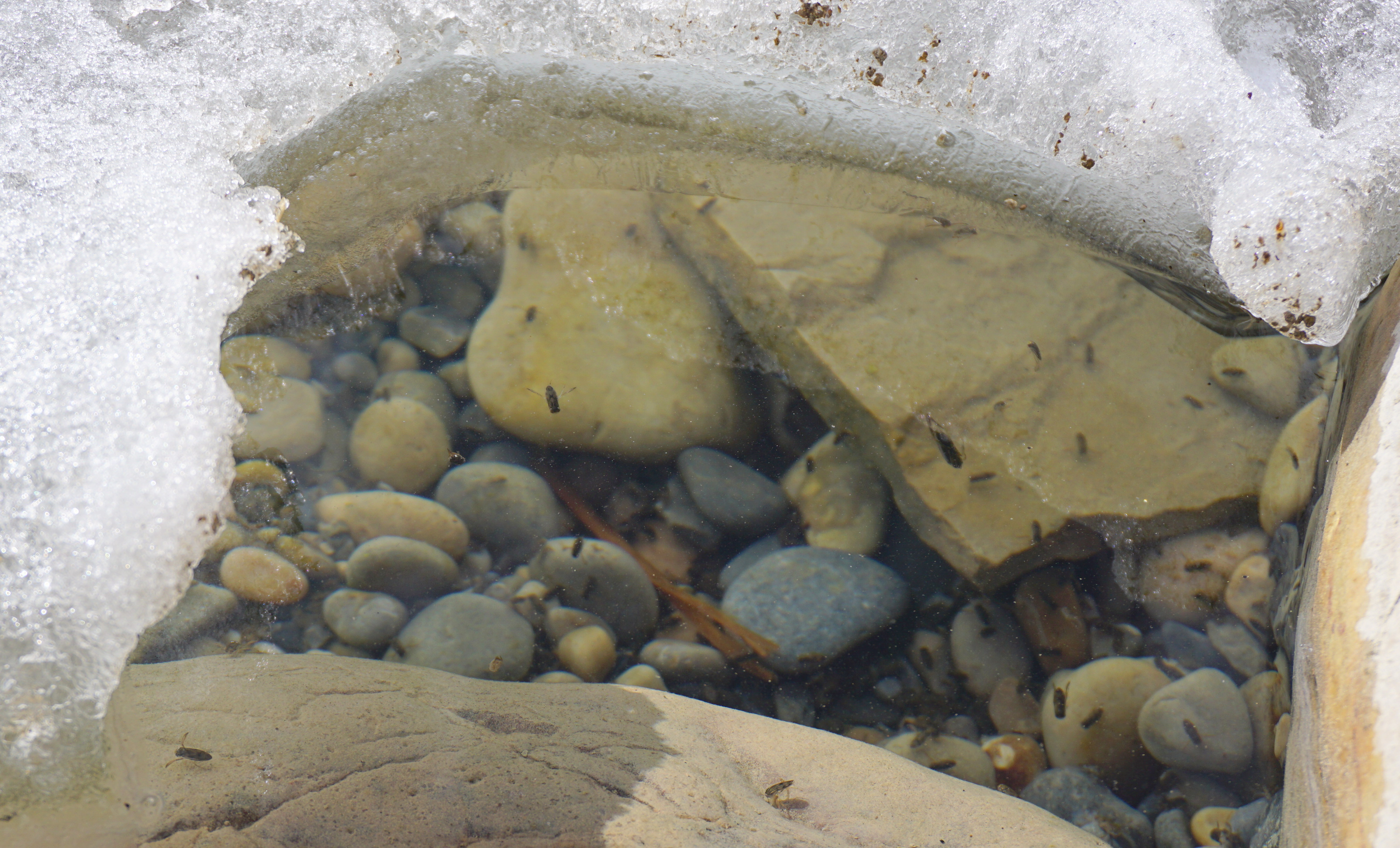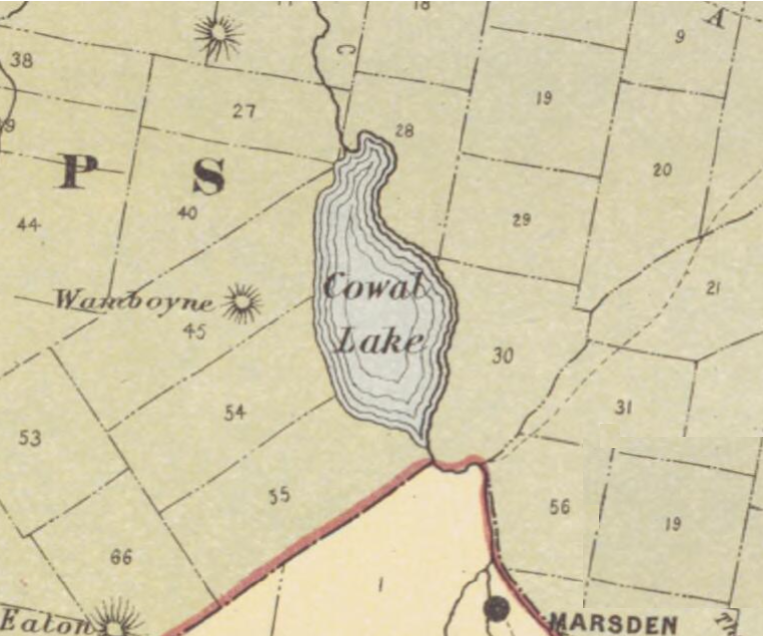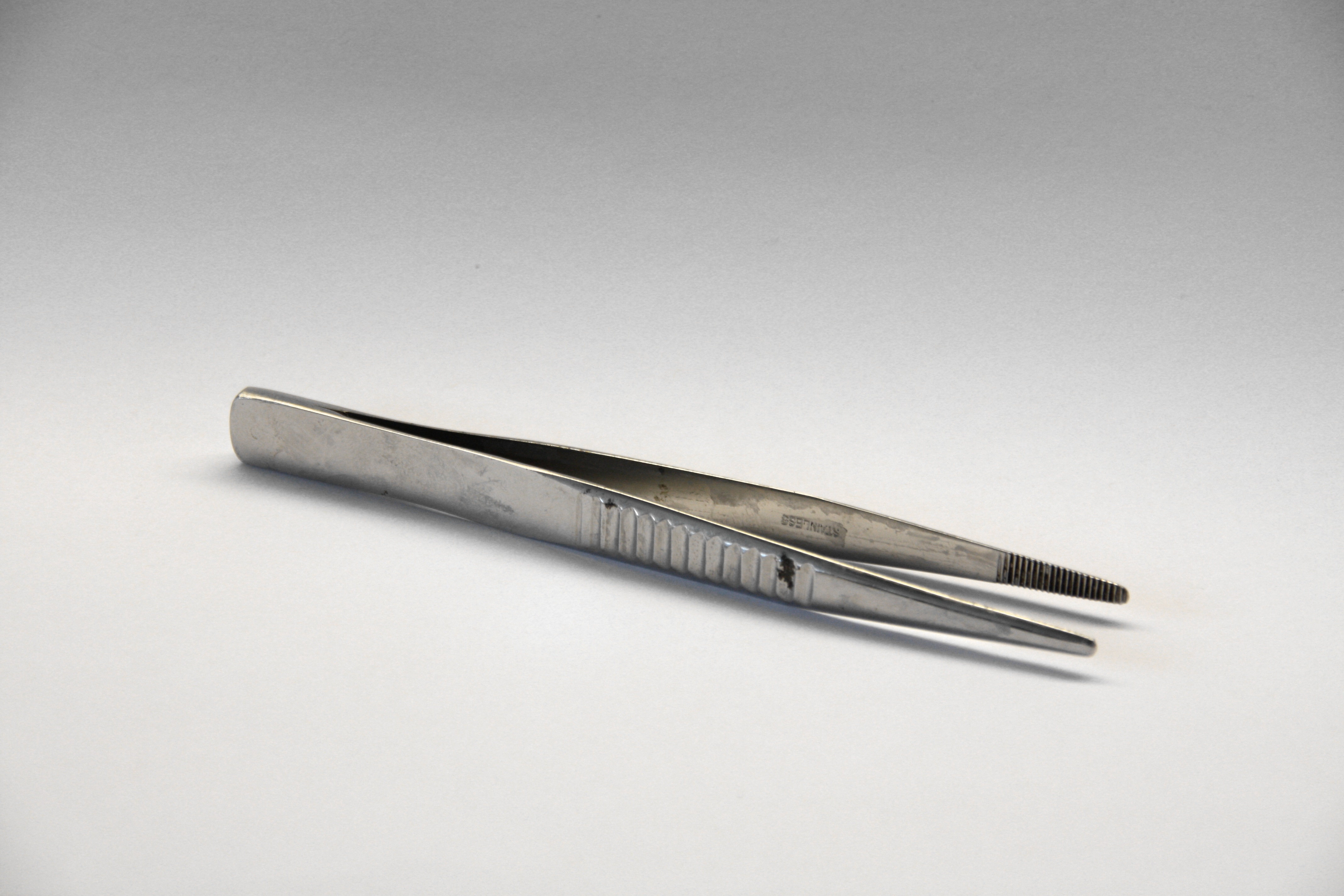|
Royal Spoonbill
The royal spoonbill (''Platalea regia'') also known as the black-billed spoonbill, occurs in intertidal flats and shallows of fresh and saltwater wetlands in Australia, New Zealand, Indonesia, Papua New Guinea, and the Solomon Islands. (In New Zealand, it is also known by the Māori name .) It has also been recorded as a vagrant in New Caledonia. The royal spoonbill lives in wetlands and feeds on crustaceans, fish and small insects by sweeping its bill from side to side. It always flies with its head extended. Widespread throughout its large range, the royal spoonbill is evaluated as Least Concern on the IUCN Red List of Threatened Species. Taxonomy The renowned ornithologist John Gould first described the royal spoonbill in 1838, naming it ''Platalea regia'' and noting its similarity to the Eurasian spoonbill (''P. leucorodia''). A 2010 study of mitochondrial DNA of the spoonbills by Chesser and colleagues found that the royal and black-faced spoonbills were each other's closes ... [...More Info...] [...Related Items...] OR: [Wikipedia] [Google] [Baidu] |
John Gould
John Gould (; 14 September 1804 – 3 February 1881) was an English ornithologist. He published a number of monographs on birds, illustrated by plates produced by his wife, Elizabeth Gould, and several other artists, including Edward Lear, Henry Constantine Richter, Joseph Wolf and William Matthew Hart. He has been considered the father of bird study in Australia and the Gould League in Australia is named after him. His identification of the birds now nicknamed "Darwin's finches" played a role in the inception of Darwin's theory of evolution by natural selection. Gould's work is referenced in Charles Darwin's book, ''On the Origin of Species''. Early life Gould was born in Lyme Regis, the first son of a gardener. Both father and son probably had little education. After working on Dowager Lady Poulett's glass house, his father obtained a position on an estate near Guildford, Surrey, and then in 1818, Gould Snr became foreman in the Royal Gardens of Windsor. Gould then be ... [...More Info...] [...Related Items...] OR: [Wikipedia] [Google] [Baidu] |
Crabs
Crabs are decapod crustaceans of the infraorder Brachyura, which typically have a very short projecting "tail" (abdomen) ( el, βραχύς , translit=brachys = short, / = tail), usually hidden entirely under the thorax. They live in all the world's oceans, in freshwater, and on land, are generally covered with a thick exoskeleton, and have a single pair of pincers. They first appeared during the Jurassic Period. Description Crabs are generally covered with a thick exoskeleton, composed primarily of highly mineralized chitin, and armed with a pair of chelae (claws). Crabs vary in size from the pea crab, a few millimeters wide, to the Japanese spider crab, with a leg span up to . Several other groups of crustaceans with similar appearances – such as king crabs and porcelain crabs – are not true crabs, but have evolved features similar to true crabs through a process known as carcinisation. Environment Crabs are found in all of the world's oceans, as well as in fresh w ... [...More Info...] [...Related Items...] OR: [Wikipedia] [Google] [Baidu] |
Carassius Auratus
The goldfish (''Carassius auratus'') is a freshwater fish in the family Cyprinidae of order Cypriniformes. It is commonly kept as a pet in indoor aquariums, and is one of the most popular aquarium fish. Goldfish released into the wild have become an invasive pest in parts of North America. Native to East Asia, the goldfish is a relatively small member of the carp family (which also includes the Prussian carp and the crucian carp). It was first selectively bred for color in imperial China more than 1,000 years ago, and several distinct breeds have since been developed. Goldfish breeds vary greatly in size, body shape, fin configuration, and coloration (various combinations of white, yellow, orange, red, brown, and black are known). History Various species of carp (collectively known as Asian carp) have been bred and reared as food fish for thousands of years in East Asia. Some of these normally gray or silver species have a tendency to produce red, orange or yellow ... [...More Info...] [...Related Items...] OR: [Wikipedia] [Google] [Baidu] |
Gambusia Affinis
The western Mosquitofish (''Gambusia affinis'') is a North American freshwater fish, also known commonly, if ambiguously, as simply Mosquitofish or by its genus, generic name, ''Gambusia'', or by the common name gambezi. Its sister species, the eastern mosquitofish (''Gambusia holbrooki'') is also referred to by these names. Mosquitofish are small in comparison to many other freshwater fish, with females reaching a maximum length of and males a maximum length of . The female can be distinguished from the male by her larger size and a gravid spot at the posterior of her abdomen. The name "Mosquitofish" was given because the fish eats mosquito larvae, and has been used more than any other fishes for the biological control of mosquitoes. Gambusia typically eat zooplankton, beetles, Mayfly, mayflies, Caddisfly, caddisflies, mites, and other invertebrates; mosquito larvae make up only a small portion of their diet. Mosquitofish were introduced directly into ecosystems in many part ... [...More Info...] [...Related Items...] OR: [Wikipedia] [Google] [Baidu] |
Corixidae
Corixidae is a family of aquatic insects in the order Hemiptera. They are found worldwide in virtually any freshwater habitat and a few species live in saline water. There are about 500 known species worldwide, in 55 genera, including the genus '' Sigara''. Members of the Corixidae are commonly known as water boatmen, a term that is sometimes used in the United Kingdom for ''Notonecta glauca'', an insect of a different family, Notonectidae. ''Corixa punctata'' is the "lesser water boatman". Morphology and ecology Corixidae generally have a long flattened body ranging from long. Many have extremely fine dark brown or black striations marking the wings. They tend to have four long rear legs and two short front ones. The forelegs are covered with hairs and shaped like oars, hence the name "water boatman". Their four hindmost legs have scoop- or oar-shaped tarsi to aid swimming. They also have a triangular head with short, triangular mouthparts. Corixidae dwell in slow rivers and p ... [...More Info...] [...Related Items...] OR: [Wikipedia] [Google] [Baidu] |
Notonectidae
Notonectidae is a cosmopolitan family of aquatic insects in the order Hemiptera, commonly called backswimmers because they swim "upside down" (inverted). They are all predators and typically range from in length. They are similar in appearance to Corixidae (water boatmen), but can be separated by differences in their dorsal-ventral coloration, front legs, and predatory behavior. Their dorsum is convex, lightly colored without cross striations. Their front tarsi are not scoop-shaped and their hind legs are fringed for swimming. There are about 350 species in two subfamilies: Notonectinae with seven genera, and Anisopinae with four genera. Members in the former subfamily are often larger than those in the latter. Backswimmers swim on their backs, vigorously paddling with their long, hair-fringed hind legs and attack prey as large as tadpoles and small fish. They can inflict a painful "bite" on a human being, actually a stab with their sharp tubular mouthparts (proboscis). They inh ... [...More Info...] [...Related Items...] OR: [Wikipedia] [Google] [Baidu] |
Atyidae
Atyidae is a family of shrimp, present in all tropical and most temperate waters of the world. Adults of this family are almost always confined to fresh water. This is the only family in the superfamily Atyoidea. Genera and species The following classification follows De Grave ''et al.'' (2010), with subsequent additions. *'' Antecaridina'' Edmondson, 1954 *'' Archaeatya'' Villalobos, 1959 *''Atya'' Leach, 1816 *'' Atyaephyra'' de Brito Capello, 1867 *'' Atydina'' Cai, 2010 *'' Atyella'' Calman, 1906 *''Atyoida'' Randall, 1840 *''Atyopsis'' Chace, 1983 *'' Australatya'' Chace, 1983 *'' Caridella'' Calman, 1906 *''Caridina'' H. Milne-Edwards, 1837 *'' Caridinides'' Calman, 1926 *'' Caridinopsis'' Bouvier, 1912 *''Delclosia'' Rabadà, 1993 † *'' Dugastella'' Bouvier, 1912 *'' Edoneus'' Holthuis, 1978 *''Elephantis'' Castelin, Marquet & Klotz, 2013 *'' Gallocaris'' Sket & Zakšek, 2009 *''Halocaridina'' Holthuis, 1963 *'' Halocaridinides'' Fujino & Shokita, 1975 *'' Jolivetya'' ... [...More Info...] [...Related Items...] OR: [Wikipedia] [Google] [Baidu] |
Macrobrachium
''Macrobrachium'' is a genus of freshwater prawns or shrimps characterised by the extreme enlargement of the second pair of pereiopods, at least in the male. Species It contains these species: *'' Macrobrachium acanthochirus'' F. Villalobos, 1967 *'' Macrobrachium acanthurus'' (Wiegmann, 1836) *'' Macrobrachium acherontium'' Holthuis, 1977 *'' Macrobrachium adscitum'' Riek, 1951 *'' Macrobrachium aemulum'' (Nobili, 1906) *'' Macrobrachium agwi'' Klotz, 2008 *''Macrobrachium ahkowi'' Chong & Khoo, 1987 *'' Macrobrachium altifrons'' (Henderson, 1893) *''Macrobrachium amazonicum'' (Heller, 1862) *'' Macrobrachium americanum'' Spence Bate, 1868 *'' Macrobrachium amplimanus'' Cai & Dai, 1999 *''Macrobrachium andamanicum'' (Tiwari, 1952) *''Macrobrachium aracamuni'' Rodríguez, 1982 *''Macrobrachium asperulum'' (von Martens, 1868) *''Macrobrachium assamense'' (Tiwari, 1958) *''Macrobrachium atabapense'' S. Pereira, 1986 *''Macrobrachium atactum'' Riek, 1951 *''Macrobrachium auratu ... [...More Info...] [...Related Items...] OR: [Wikipedia] [Google] [Baidu] |
Common Yabby
The common yabby (''Cherax destructor'') is an Australian freshwater crustacean in the Parastacidae family (biology), family. It is listed as a vulnerable species of crayfish by the International Union for Conservation of Nature (IUCN), though wild yabby populations remain strong, and have expanded into new habitats created by reservoirs and farm dams. Other names frequently used for ''Cherax destructor'' include the blue yabby or cyan yabby. Its common name of "Freshwater yabby, yabby" is also applied to many other Australian ''Cherax'' species of crustacean (as well as to marine ghost shrimp of the infraorder Thalassinidea). Yabbies occasionally reach up to in length, but are more commonly long. Colour is highly variable and depends on water clarity and habitat; yabbies can range from black, blue-black, or dark brown in clear waters to light brown, green-brown, or beige in turbid waters. Yabbies specifically bred to be a vibrant blue colour are now popular in the aquarium ... [...More Info...] [...Related Items...] OR: [Wikipedia] [Google] [Baidu] |
Lake Cowal
Lake Cowal is the largest inland lake in New South Wales, Australia. The lake is ephemeral, being fed by the small Bland Creek and by the occasional flooding of the Lachlan River. Despite this, it retains a considerable amount of water in about 70% of years. Biodiversity Lake Cowal is situated 47 km North East of West Wyalong and is home to a variety of endangered species. Some of these species include: * Australian pillwort * Australasian bittern * Black-necked stork * Blue-billed duck * Freshwater catfish (protected) * Macquarie perch (protected) Recognition The lake is listed on the now-defunct Register of the National Estate in 1992 and was added to the Directory of Important Wetlands in Australia in 1998. It is listed as a Landscape Conservation Area by the National Trust of Australia.} Mineral resources and mining The area surrounding the lake is rich in minerals - especially gold - and is currently being mined by Evolution Mining. Barrick Gold sold the Cowal M ... [...More Info...] [...Related Items...] OR: [Wikipedia] [Google] [Baidu] |
Spoonbills Feeding At Pāuatahanui Inlet
Spoonbills are a genus, ''Platalea'', of large, long-legged wading birds. The spoonbills have a global distribution, being found on every continent except Antarctica. The genus name ''Platalea'' derives from Ancient Greek and means "broad", referring to the distinctive shape of the bill. Six species are recognised, which although usually placed in a single genus have sometimes been split into three genera. All spoonbills have large, flat, spatulate bills and feed by wading through shallow water, sweeping the partly opened bill from side to side. The moment any small aquatic creature touches the inside of the bill—an insect, crustacean, or tiny fish—it is snapped shut. Spoonbills generally prefer fresh water to salt but are found in both environments. They need to feed many hours each day. Taxonomy The genus ''Platalea'' was introduced in 1758 by the Swedish naturalist Carl Linnaeus in 1758 in the tenth edition of his '' Systema Naturae''. The genus name is Latin for ... [...More Info...] [...Related Items...] OR: [Wikipedia] [Google] [Baidu] |
Forceps
Forceps (plural forceps or considered a plural noun without a singular, often a pair of forceps; the Latin plural ''forcipes'' is no longer recorded in most dictionaries) are a handheld, hinged instrument used for grasping and holding objects. Forceps are used when fingers are too large to grasp small objects or when many objects needed to be held at one time while the hands are used to perform a task. The term "forceps" is used almost exclusively in the fields of biology and medicine. Outside biology and medicine, people usually refer to forceps as tweezers, tongs, pliers, clips or clamps. Mechanically, forceps employ the principle of the lever to grasp and apply pressure. Depending on their function, basic surgical forceps can be categorized into the following groups: # Non-disposable forceps. They should withstand various kinds of physical and chemical effects of body fluids, secretions, cleaning agents, and sterilization methods. # Disposable forceps. They are usually made o ... [...More Info...] [...Related Items...] OR: [Wikipedia] [Google] [Baidu] |

_by_John_Gould.jpg)
.jpg)
.jpg)






